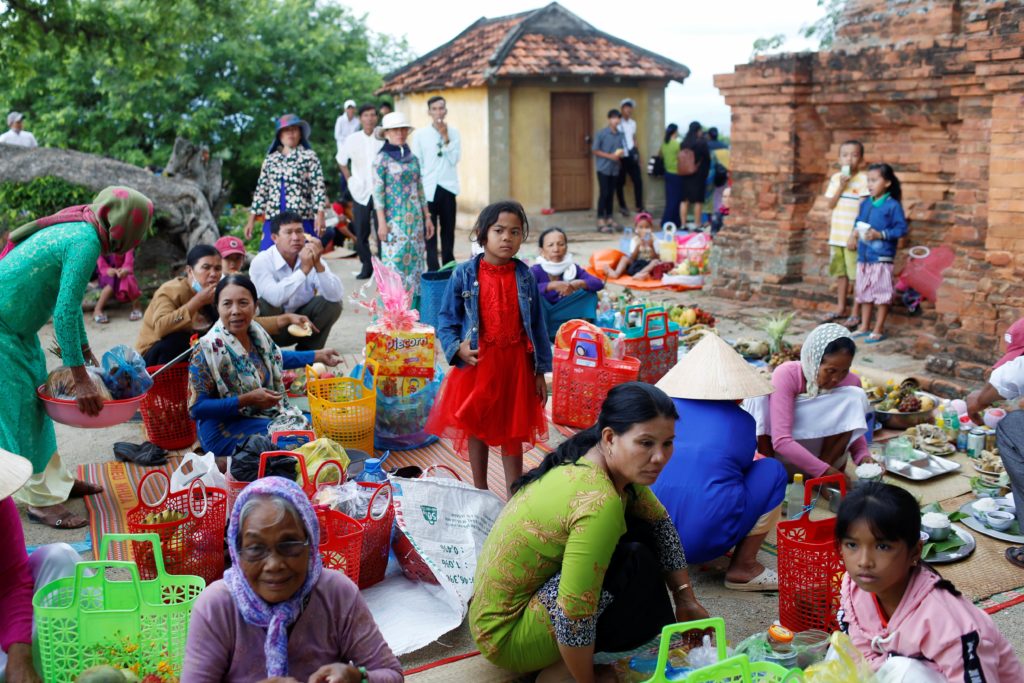In Vietnam, men parade but women rule at a festival called ‘Kate’
 Vietnam’s ethnic Cham women perform a traditional dance during the ‘Kate’ festival in rural commune Phuoc Hau in Phan Rang, Vietnam September 28, 2019. (Photo: Reuters)
Vietnam’s ethnic Cham women perform a traditional dance during the ‘Kate’ festival in rural commune Phuoc Hau in Phan Rang, Vietnam September 28, 2019. (Photo: Reuters) PHAN RANG – Thousands of Vietnam’s ethnic Cham people have met under rainy late September skies for their annual “Kate” festival that, according to the multi-faith community’s calendar, marks the end of one harvest season and the beginning of another.
The Cham are descendents of a powerful ancient kingdom that once spanned large parts of central and southern Vietnam a millennium ago.
They are a traditionally matriarchal society, which worships a female goddess and expects the youngest daughter to inherit family assets.
A rich history of trading and movement across Asia have made the Cham a uniquely multi-faith group, divided into predominantly Hindu and Muslim branches, all of whom come together to celebrate “Kate”.

Vietnam’s Cham ethnic people lay their offerings around the Po Klong Garai temple during the ‘Kate’ festival which marks the end of harvesting season in Phan Rang, Vietnam September 28, 2019. (Photo: Reuters)
The week-long festival, which began last Friday, marks the Cham calendar’s de facto new year, at the onset of a new harvest.
At the Po Klong Garai temple in the southern town of Phan Rang – a Vietnamese rendering of Panduranga, the Cham Kingdom’s ancient capital – dozens of men in bright red and white traditional costume paraded with a sacred garment.
The holy dress, which is kept in the nearby commune of Phuoc Ha, is brought to the crumbling, clay-brick 13th Century temple, within which lies a statue of the Hindu god, Shiva.
Behind a small door, the deity is dressed in the sacred Cham garments by religious leaders, who perform traditional rites and blessings. Others make offerings of fruit, boiled chicken and white rice on bamboo mats laid at the foot of the ancient temple.
Reuters


